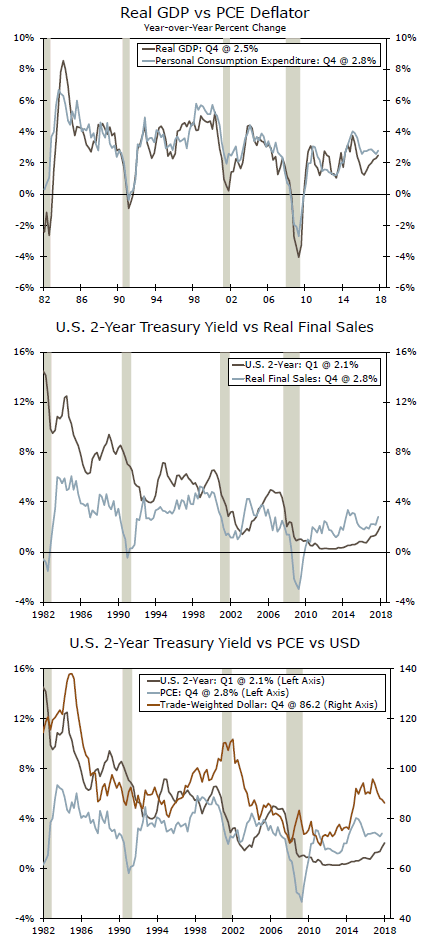Durable goods orders fell 3.7 percent in January amid a drop in aircraft and defense orders. Core capital goods orders, however, were down 0.2 percent and the weakening trend points to slower business spending in Q1.
Back to Reality
Last year’s moonshot in business spending is showing some signs of returning to earth. After increasing at a double-digit pace in both the third and fourth quarter of 2017, private equipment spending looks to be cooling according to the latest durable goods report. Durable goods orders fell 3.7 percent in January (we were expecting a 3.5 percent pullback). That came on the heels of a slight downward revision to December’s now 2.6 percent gain.
The weakness in orders can be partly traced to the often volatile transportation sector. After two months of strong gains, nondefense aircraft orders fell 28 percent in January. Meanwhile, motor vehicles and parts posted a scant increase of 0.1 percent, which was just enough to offset December’s decline. Orders for new vehicles are still rising at an impressive 11.9 percent pace on a three-month average annualized basis, although this is a bit softer from the pace set in December.
Orders for defense aircraft also fell sharply (down 46 percent). This led to a 26.3 percent decline in total defense orders, but excluding this category, private orders still looked weak, having declined 2.7 percent. Most disappointing in today’s report was the 0.2 percent drop in orders when excluding aircraft and defense orders, or "core" orders. That followed a 0.6 percent decline in December and the trend in core capital goods orders has weakened noticeably from an impressive run in the fall; core capital goods orders are up at a 3.7 percent three-month average annualized pace, compared to over 18 percent as recently as November.
Converge They Must
With survey data still confirming soaring confidence in the business sector and the boost to after-tax corporate earnings just beginning to benefit from the tax cuts, there are plenty of silver linings for business spending. That said, the softening in core orders is beginning to look more at odds with soft survey data like the ISM manufacturing index, and consecutive declines in core capital goods orders cannot be ignored.
As we have previously written, we expect to see the hard data for orders converge with soft survey data. In times of such pronounced survey strength, however, the gap between hard and soft data is usually narrowed by business surveys getting reined in, rather than the hard orders data which feed into GDP experiencing a marked acceleration.
Therefore, we expect to see some softening in the ISM index when the February report is released on Thursday. Prior to this morning’s release we also had already anticipated the lagged effects of the tax cuts and we had penciled-in a slower pace of equipment spending in the first quarter. Remarkably, against this backdrop of euphoria and favorable fiscal policy, the hard data suggest downside risk to our already-tempered forecast for capital goods spending in the first quarter.














